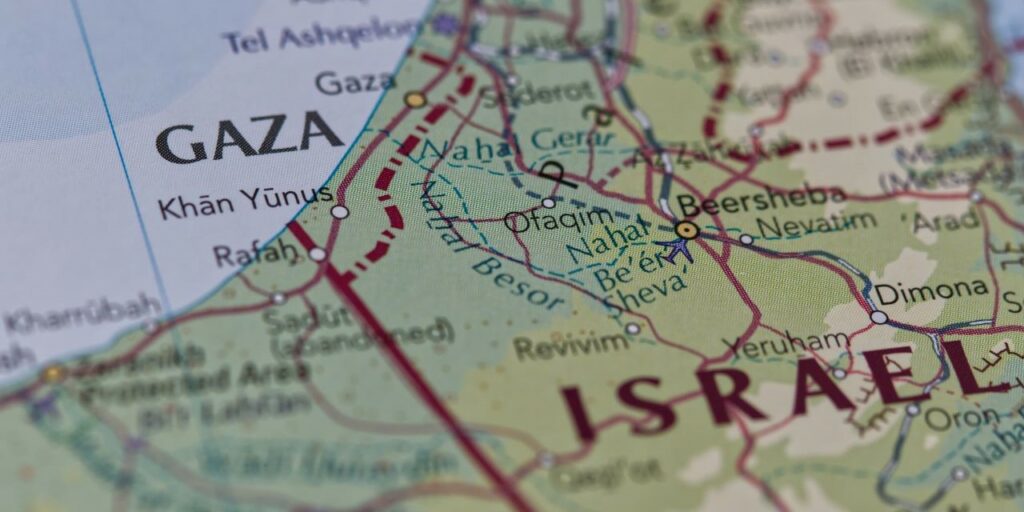INTRO:
The Israel conflict has long been a complex and deeply entrenched issue in the Middle East, with far-reaching implications for the region and beyond. In this article, we delve into the ongoing conditions of the conflict, shedding light on the current state of affairs and exploring the primary reasons behind its persistence. By understanding the complexities and root causes of the conflict, we can begin to unravel the path towards a peaceful resolution. Join us as we navigate through the intricacies of the Israel conflict, examining its present conditions and the key factors that contribute to its ongoing nature.
Section 1: Current Conditions of the War
The Israel conflict, an enduring and complex issue that has gripped the Middle East for decades, continues to unfold with significant consequences for the region and the world. This article aims to shed light on the current conditions of the conflict, providing a comprehensive understanding of the ongoing situation.
The conflict between Israel and its neighboring countries, primarily Palestine, has witnessed periodic escalations in recent years. In the present scenario, tensions have once again flared up, leading to increased violence and casualties. Both sides have been engaged in a series of confrontations, including rocket attacks, airstrikes, protests, and clashes on the ground.
The recent conflict has resulted in a profound humanitarian crisis. Innocent civilians, including women and children, have borne the brunt of the violence, facing displacement, loss of life, and destruction of infrastructure. The situation is further exacerbated by the blockade imposed on the Gaza Strip, which has severely limited access to basic necessities such as food, water, and healthcare.

Section 2: Main Reasons for the Conflict
Understanding the root causes of the Israel conflict is essential to grasp its complexities and work towards a lasting solution. While the conflict is multifaceted, several key factors contribute to its persistence:
1. Historical and Territorial Disputes:
The conflict traces its origins back to the early 20th century, with competing claims to the same land by Israelis and Palestinians. The establishment of the State of Israel in 1948 and subsequent wars have shaped the ongoing struggle over borders, settlements, and the status of Jerusalem.
2. Occupation and Settlement Expansion:
The Israeli occupation of Palestinian territories, particularly the West Bank and East Jerusalem, has been a major point of contention. Israeli settlements continue to expand in these areas, which undermines the prospects of a viable Palestinian state and fuels resentment among Palestinians.
3. Security Concerns:
Israel has faced significant security challenges, including terrorist attacks and threats from militant groups such as Hamas and Hezbollah. These concerns have influenced Israeli policies, such as the construction of barriers and checkpoints, in an attempt to protect its citizens.
4. Access to Resources:
Access to vital resources, including land, water, and energy, has been a source of conflict. The scarcity of water resources in the region, in particular, has intensified tensions, leading to disputes over control and allocation.
5. Political and Diplomatic Stalemate:
The lack of progress in peace negotiations and the failure to find a mutually acceptable solution have contributed to the persistent nature of the conflict. Issues such as the status of Jerusalem, the right of return for Palestinian refugees, and the recognition of Israel as a Jewish state remain contentious.
Section 3: The Future Challenges and Possible Solutions
The path to resolving the Israel conflict is undoubtedly challenging, but not insurmountable. The parties involved, along with the international community, must work towards the following:
1. Dialogue and Negotiations:
Engaging in meaningful dialogue and negotiations is crucial to finding a lasting solution. Both Israelis and Palestinians need to come together to address their grievances, aspirations, and concerns, with the support and facilitation of the international community.
2. Confidence-Building Measures:
Building trust between the parties requires confidence-building measures, such as a freeze on settlement construction, easing of restrictions on movement and access, and efforts to promote economic development and cooperation.
3. International Mediation:
International actors, including the United Nations, regional organizations, and influential nations, should play an active role in mediating the conflict. Their involvement can help bridge the gaps between the parties and create a conducive environment for negotiations.
4. Addressing Humanitarian Needs:
Immediate attention must be given to the humanitarian crisis affecting innocent civilians. Providing humanitarian aid, supporting reconstruction efforts, and ensuring the protection of human rights are essential steps towards alleviating suffering and creating conditions for peace.
CONCLUSION:
The Israel conflict continues to impact the lives of countless people, perpetuating a cycle of violence and instability. Understanding the current conditions and main reasons behind the conflict is a crucial step towards finding a peaceful resolution. By addressing historical, territorial, and political issues, along with a genuine commitment to dialogue and compromise, the international community can contribute to a future where Israelis and Palestinians can coexist in peace and security.